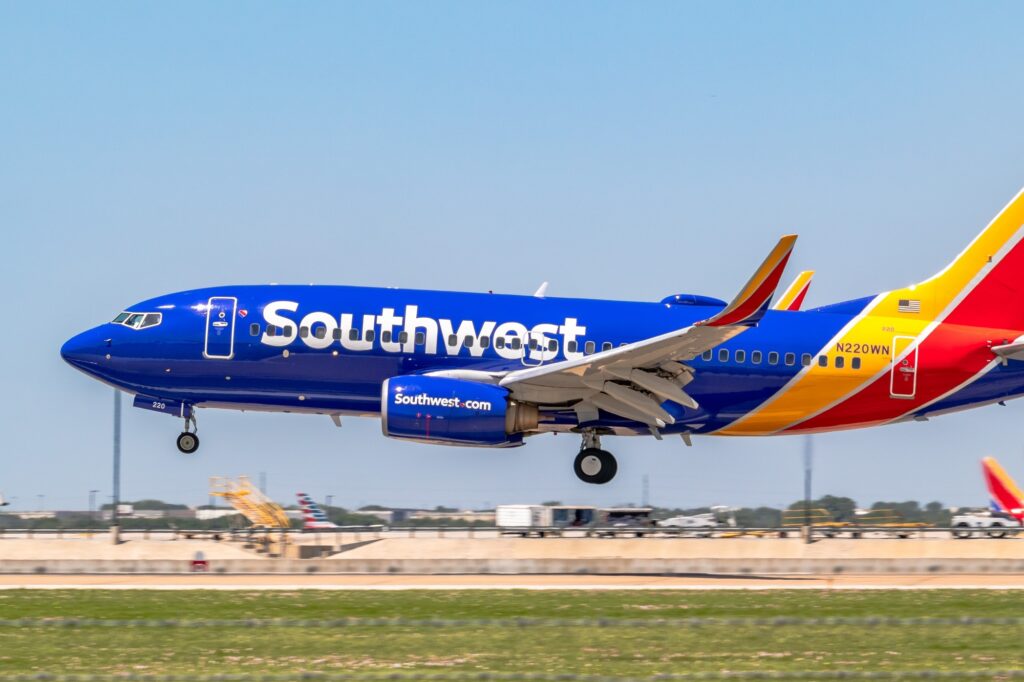The United States (US) Federal Aviation Administration (FAA) has mandated that Boeing make changes to the engine nacelle of the 737 NextGeneration (NG) aircraft by July 2028.
On September 7, 2023, the FAA granted Boeing an exception from the Code of Federal Regulations (CFR) for the Boeing 737NG aircraft family, which includes the 737-600, 737-700/700C, 737-800, and 737-900/900ER equipped with CFM International CFM56-7B engines.
Aviation Week was the first to report the exception.
With the exception, the manufacturer can “make incremental design improvements to the propulsion system”. In the previous exception dating October 2021, the FAA issued a directive requiring Boeing to come up with design changes and retrofit instructions to comply with safety requirements in the US that would have to be approved by the regulator.
In July 2023, Richard Ptacin, the chief project engineer of the Boeing 737, asked the FAA to extend the timeframe for Boeing to account for potential operator maintenance errors. In the same petition, Ptacin also said that “the additional time would also allow Boeing the adequate time to have scheduled discussions with the FAA to ensure Boeing’s proposed solutions would meet the intent” of the CFR regarding potential maintenance lapses.
The FAA concluded that while Boeing’s plan “did not fully account for FAA guidance on potential maintenance errors”, it does address the potential safety concerns of an engine fan blade failure.
“Boeing’s requested extension of the exemption maintains the level of safety of the existing exemption by ensuring operators will have service instructions available to begin implementing design changes without change to the original schedule,” the FAA continued in its decision text.
As such, the revised exception will allow the manufacturer and airlines to come up with solutions to address potential maintenance lapses, which the regulator said would only further improve the safety level of the Boeing 737NG aircraft family.
No change to the 737NG’s cowl design change and retrofit timeline
While the FAA gave Boeing and airline operators of the 737NG aircraft family more time to address the possible maintenance errors, the timeline to make the design changes and retrofit the engine nacelles has remained the same.
As a result, Boeing must now provide the design change plans to the FAA and the service instructions to airlines on how to retrofit the changes made to the engine nacelle by December 31, 2024.
Furthermore, the manufacturer “must develop an airworthiness limitation and include it in the Airworthiness Limitation Section of the Boeing Model 737NG airplane’s Instructions for Continued Airworthiness that requires operators to incorporate design changes” to several parts of the engine nacelle of the 737NG before July 31, 2028.
That includes a new spacer design for the engine inlet with increased fastener capability, changes to the fan cowl and fan cowl support beam, and the implementation of new exhaust nozzle structural stiffening elements.
Lastly, Boeing has until December 31, 2029, to address potential maintenance errors.
However, the manufacturer must provide the FAA with a project schedule with “all major milestones” while it comes up with a plan to prevent operators’ maintenance errors by October 31, 2023. Boeing will have to submit progress updates to the agency no less than every three months after that date.
The changes to the 737NG’s engine nacelle were mandated following two engine failures.
One of the engine failures resulted in parts penetrating the fuselage, which led to a passenger being sucked out of her seat and fatally wounded. The incident took place when a Southwest Boeing 737-700, registered as N772SW, was operating flight SW1380 between New York LaGuardia Airport (LGA) and Dallas Love Field (DAL) in April 2018.
The engine failure took place while the aircraft was climbing through FL320, causing the flight crew to divert to Philadelphia International Airport (PHL).
According to the National Safety Transportation Board’s (NTSB) executive summary of the incident, parts “of the left engine inlet and fan cowl separated from the airplane, and fragments from the inlet and fan cowl struck the left wing, the left-side fuselage, and the left horizontal stabilizer”. One of the fragments of the cowl struck the fuselage near a cabin window, with the window departing the 737-700 and resulting in rapid depressurization.
“The fan blade fractured due to a low-cycle fatigue crack that initiated in the dovetail (part of the blade root), which remained within a slot of the fan disk,” the NTSB noted.
One of the recommendations issued to the FAA by the board was that the agency would require Boeing to determine “the critical fan blade impact location(s) on the CFM56-7B engine fan case and redesign the fan cowl structure on all” 737NGs to “ensure the structural integrity of the fan cowl after a fan-blade-out event”.
Furthermore, the NTSB endorsed the FAA to make changes to the CFR’s aircraft certification requirements, mandating aircraft, and engine manufacturers to work together to identify “critical fan blade impact locations for all engine operating conditions” and the subsequent fan blade fragmentation and how that impacts the nacelle structure. In addition, the investigators recommended developing a method “to ensure that the analysis findings are fully accounted for in the design of the nacelle structure and its components”.
READ MORE: Boeing told to redesign 737 NG part after Southwest accident

